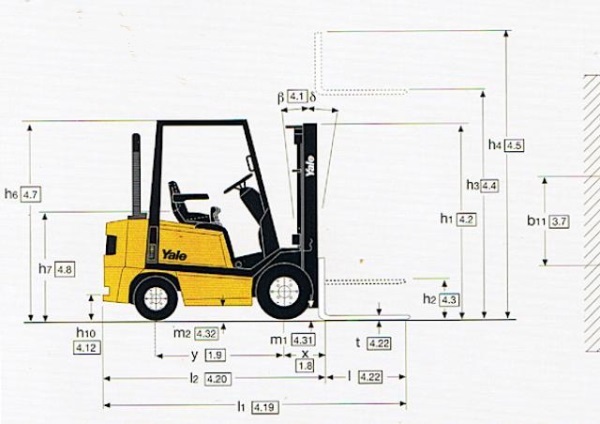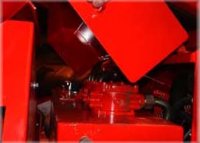Forklift Technical Information
The largest forklift operator training website in the world
![]()
![]()
Hydraulic Systems - Tanks And Pumps
 The hydraulic oil has to be kept somewhere and this is where the hydraulic tank comes in to play. These can be made of sheet metal or sometimes they are built into the side 'box' sections of the truck chassis. They have to be capable of being reached easily so they can be topped up and they must have a breather because as the oil gets hot it expands. In addition, there must be some way of checking the fluid level and a dipstick is often provided. Since the tolerances inside a hydraulic system are extremely small it is important that the top of the tank is kept spotlessly clean when checking oil level or topping up. When topping up the tank make sure that the mast of the truck is fully lowered else the oil in the mast cylinder will be forced into the tank and overflow through the breather
The hydraulic oil has to be kept somewhere and this is where the hydraulic tank comes in to play. These can be made of sheet metal or sometimes they are built into the side 'box' sections of the truck chassis. They have to be capable of being reached easily so they can be topped up and they must have a breather because as the oil gets hot it expands. In addition, there must be some way of checking the fluid level and a dipstick is often provided. Since the tolerances inside a hydraulic system are extremely small it is important that the top of the tank is kept spotlessly clean when checking oil level or topping up. When topping up the tank make sure that the mast of the truck is fully lowered else the oil in the mast cylinder will be forced into the tank and overflow through the breather
Hydraulic pump
One more major component is needed to complete the circuit and that is the pump. Most lift trucks use a gear type pump driven either by an electric motor or by the engine on an IC engine truck.
Designed for reliability and long life, high efficiency hydraulic gear pumps provide high-speed positioning and maximum working pressure. The gear pumps may have integral adjustable unloading valve in single or multiple configurations. They are high performance pumps with a long pump life, low noise level and compact size with pressure compensator, load sensing and torque limiting controls. Internal valves are not usually fitted to fork lift gear type pumps.
The basic gear pump consists of two meshed gears, a case or housing to encompass the gears, and two cover plates that enclose the ends of the gears. Each gear is mounted on a shaft supported on bearings in the end covers. Out of these, the drive shaft is coupled to the prime mover or the drive motor.
It's important to realise that hydraulic oil does not flow through "the middle" of the pump as it would be blocked by the intermeshed teeth. Instead the oil is carried around the outer periphery of the teeth of the gears, by the teeth themselves. This results in a high pressure outlet and typical fork lift truck systems generate pressures in excess of 1000 psi or much more than this.
In the light of this, the importance of checking hoses and avoiding persons standing under raised forks is critical as is the purity of the oil as small particles of unwanted matter can soon destroy a gear pump along with the even more sensitive control valves.